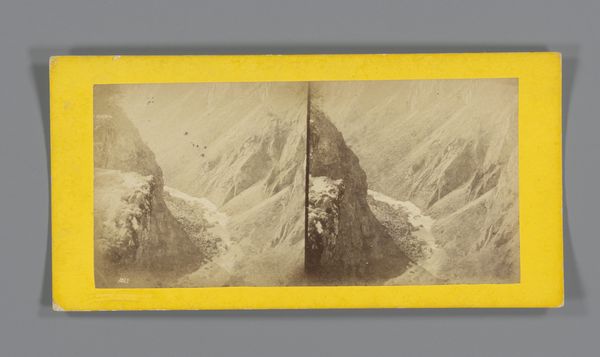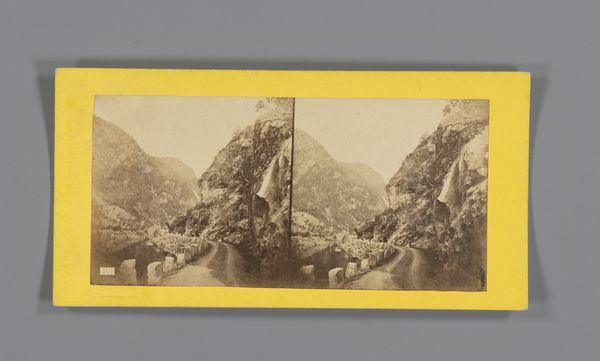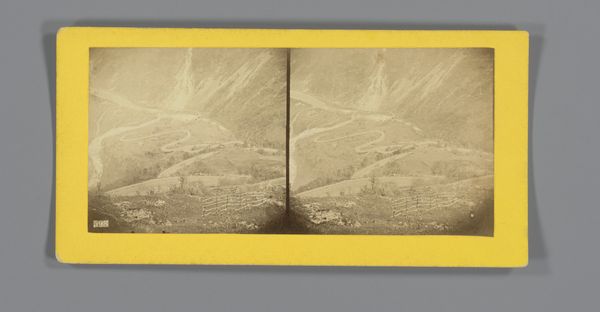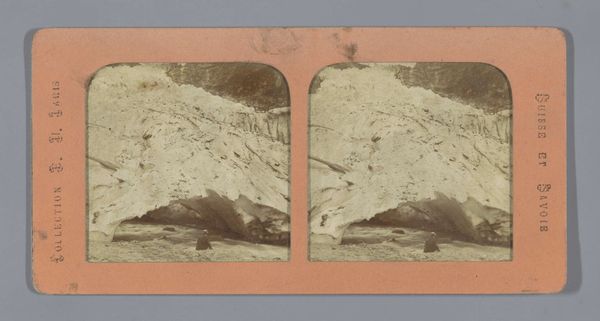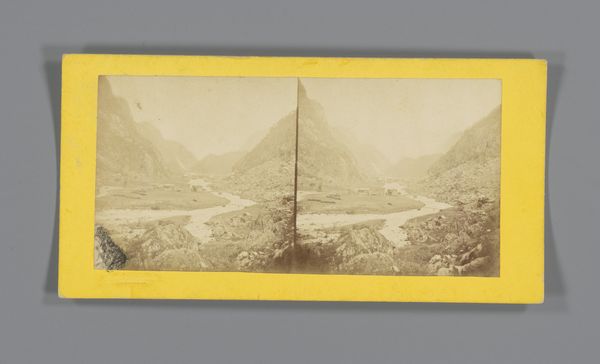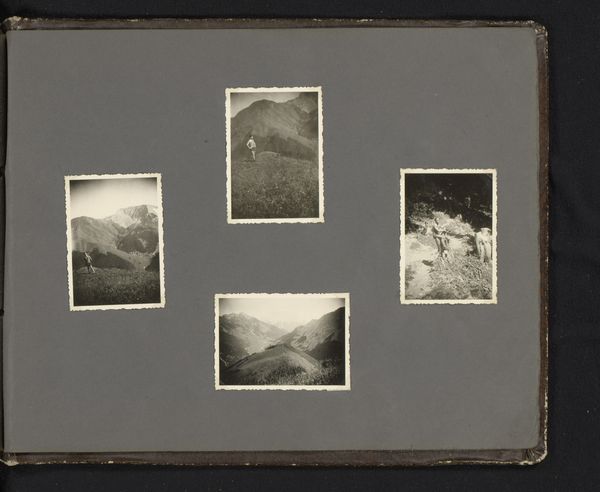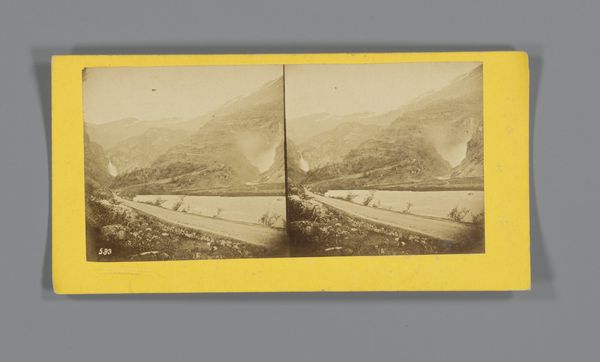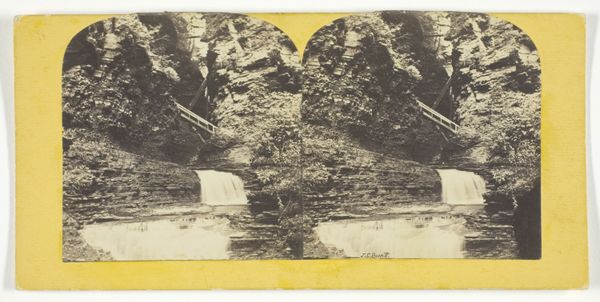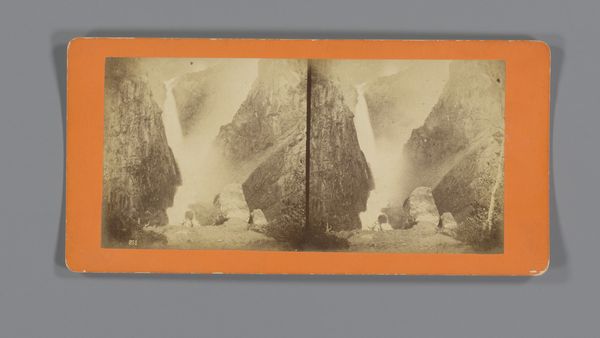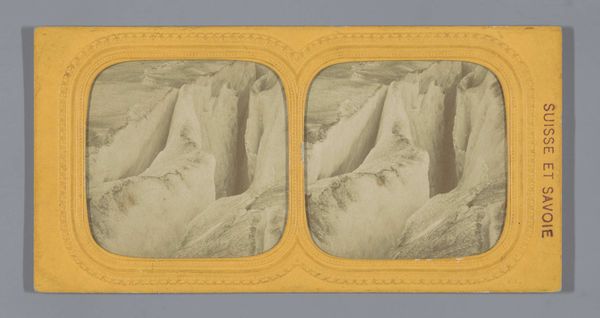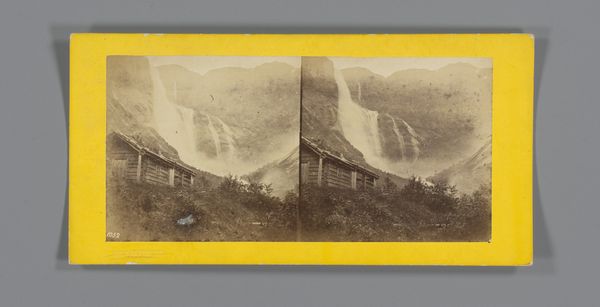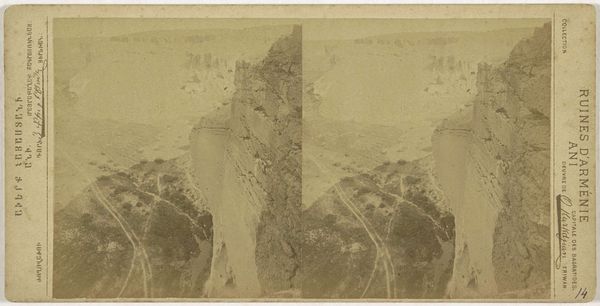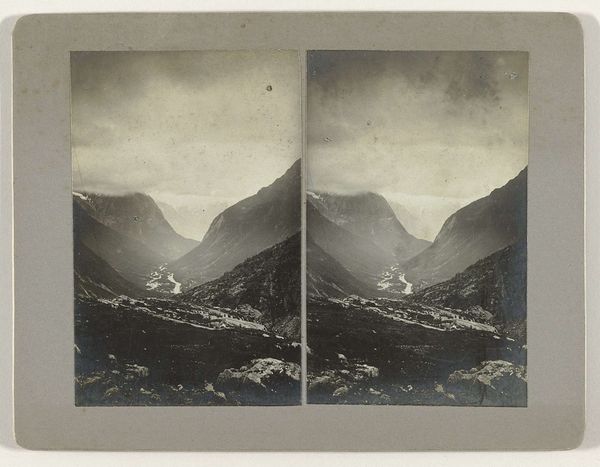
Dimensions: height 89 mm, width 177 mm
Copyright: Rijks Museum: Open Domain
Curator: What we have here is a gelatin-silver print, most likely a stereo card, created between 1861 and 1870. The photograph, entitled "Gezicht op de Buerbreengletsjer nabij Odda, Noorwegen," meaning View of the Buerbreen Glacier near Odda, Norway, is by Knud Knudsen. Editor: Immediately, I’m struck by how… industrious the landscape looks. The glaciers are grand, yes, but also a product here, ready to be consumed as a resource. The careful composition feels very deliberate in its intention. Curator: Interesting, that interpretation… I read it through the lens of romanticism, considering the context of Norwegian national identity formation at that time, a strategic employment of landscape imagery. Were photographs such as this one a vital visual language in constructing national pride? Editor: But even that relies on industrial infrastructure. Photography itself is a relatively new manufacturing process at this time. How accessible would these images have been to the common Norwegian citizen? Were they primarily for elite consumption, furthering a national identity project top-down? What's the material cost, not only in currency, but also environmental extraction of silver for this kind of project? Curator: The use of photography helped democratize landscape imagery in some respects, allowing for wider circulation than painted landscapes, which historically catered to an elite. Think of the influence of mass-produced cartes-de-visite. That’s where this print blurs lines - being presented in stereo format complicates its widespread use due to needing a special viewer, something not readily accessible by most Norwegians in 1870. It definitely raises that very point about the limitations of that distribution. Editor: Right, it all returns to the material conditions and power dynamics in place. The sublime natural landscape now becomes a manufactured commodity consumed unevenly within that budding nationalist sentiment you pointed out. It forces us to ask what social value does a remote landscape image serve a citizen removed from its splendor, perhaps even struggling against poverty to consume? Curator: These layers add depth to understanding Knudsen’s work, moving beyond a simple appreciation of its aesthetic qualities and into how these romanticized visions played a crucial part in Norwegian cultural identity at this critical historical period. Editor: Precisely, which makes you ponder whether "sublime beauty" was simply raw material in that bigger social picture of Norwegian commercial interest. A question well worth exploring on one's journey through these historic landscapes.
Comments
No comments
Be the first to comment and join the conversation on the ultimate creative platform.
